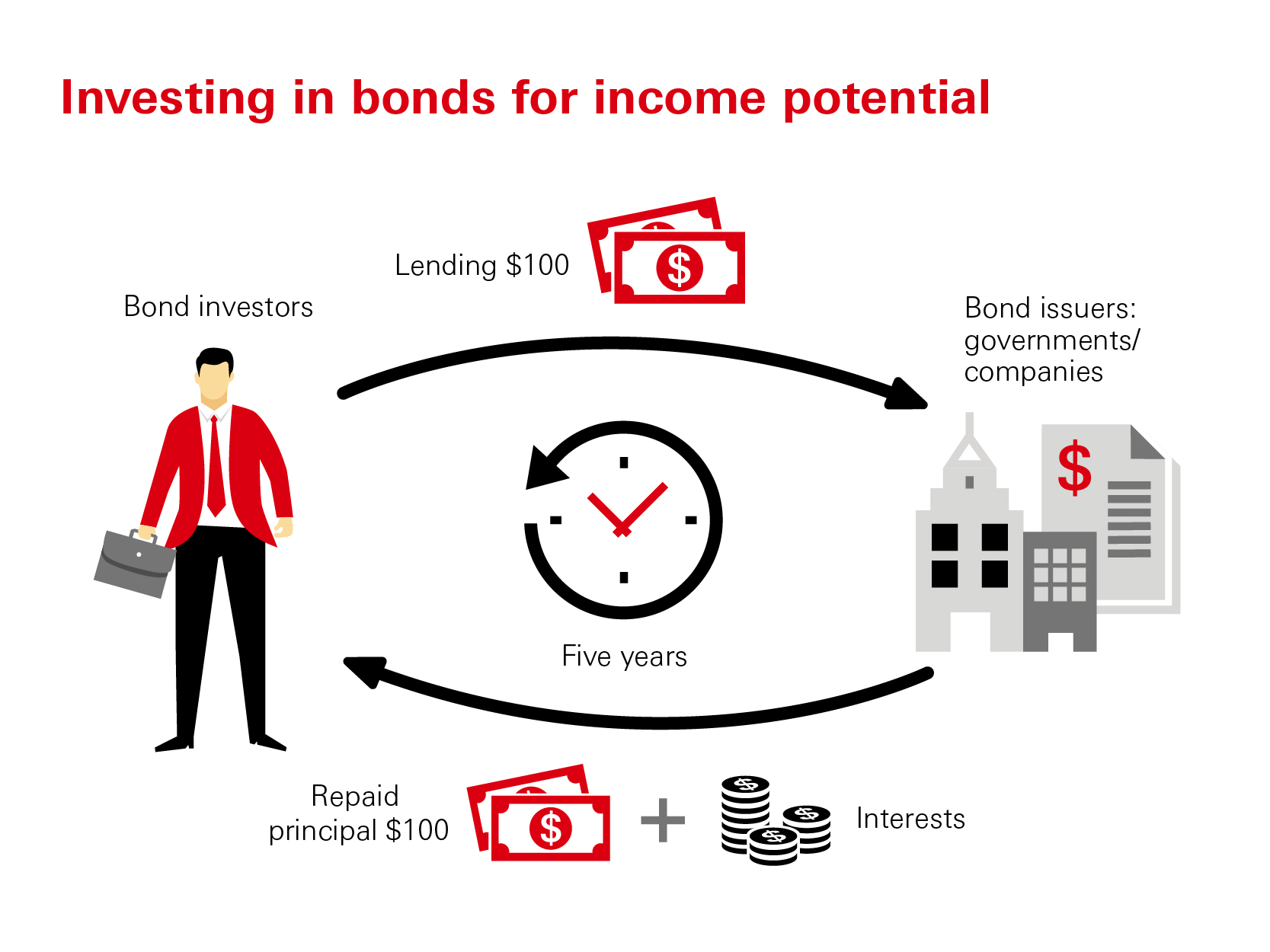

Finance
How Do Investors Use Accounting Information
Modified: February 21, 2024
Learn how investors leverage accounting information to make informed financial decisions. Explore the role of finance in analyzing data and maximizing investment returns.
(Many of the links in this article redirect to a specific reviewed product. Your purchase of these products through affiliate links helps to generate commission for LiveWell, at no extra cost. Learn more)
Table of Contents
- Introduction
- Importance of Accounting Information for Investors
- Financial Statements
- Balance Sheet
- Income Statement
- Statement of Cash Flows
- Accounting Ratios
- Profitability Ratios
- Liquidity Ratios
- Financial Leverage Ratios
- Operating Efficiency Ratios
- DuPont Analysis
- Limitations of Accounting Information
- Conclusion
Introduction
In the world of finance, making informed investment decisions is crucial. Investors rely on various sources of information to assess the financial health and performance of companies. One such essential source is accounting information. Accounting information provides critical insights into a company’s financial position, profitability, and cash flow, enabling investors to evaluate the risks and potential returns of their investments.
Accounting information encompasses a wide range of financial data, including financial statements and accounting ratios. These tools aid investors in analyzing a company’s past performance, current financial status, and future prospects. By examining accounting information, investors can make sound investment choices and mitigate potential risks.
This article aims to shed light on how investors utilize accounting information and its significance in their decision-making process. We will explore the different components of accounting information, such as financial statements and accounting ratios. Additionally, we will examine the limitations of relying solely on accounting information and explore supplementary factors investors should consider when evaluating investment opportunities.
Importance of Accounting Information for Investors
Accounting information plays a crucial role in aiding investors in their decision-making process. It provides valuable insights into the financial health and performance of companies, allowing investors to evaluate the viability of their investment choices. Let’s take a closer look at the key reasons why accounting information is essential for investors:
- Evaluation of Financial Performance: Accounting information, such as financial statements, allows investors to assess a company’s financial performance over a specific period. Through income statements, investors can analyze the revenue, expenses, and net income of a company, providing an indication of its profitability. Similarly, balance sheets provide a snapshot of a company’s assets, liabilities, and shareholders’ equity, enabling investors to gauge its financial position.
- Assessment of Financial Health: Accounting information helps investors evaluate the financial health and stability of a company. By examining the statements of cash flows, investors can assess the company’s ability to generate cash flow, meet its financial obligations, and fund its operations. This information is crucial in determining if a company has sufficient liquidity and if it is capable of sustaining its operations in the long run.
- Identification of Trends and Patterns: By analyzing accounting information over multiple periods, investors can identify trends and patterns in a company’s financial performance. This long-term perspective enables investors to assess the company’s growth trajectory, identify potential risks, and make informed predictions about its future performance.
- Comparison with Industry Peers: Accounting information allows investors to compare a company’s financial performance with its industry peers. By examining key accounting ratios, such as profitability ratios, liquidity ratios, financial leverage ratios, and operating efficiency ratios, investors can assess how well a company is performing relative to its competitors. This comparative analysis provides valuable insights into a company’s competitive position within the industry.
- Financial Decision-making: Accounting information helps investors make informed financial decisions, such as buying, selling, or holding investments. By understanding a company’s financial performance, investors can evaluate the potential risks and returns of their investments, thereby making sound investment choices aligned with their investment objectives.
In essence, accounting information serves as a valuable tool for investors, allowing them to evaluate the financial health, performance, and viability of companies. By utilizing accounting information effectively, investors can make informed investment decisions, mitigate risks, and maximize their returns.
Financial Statements
Financial statements are the foundation of accounting information and provide a comprehensive snapshot of a company’s financial performance and position. They are crucial in helping investors evaluate the profitability, liquidity, and stability of a company. The three primary financial statements are the balance sheet, income statement, and statement of cash flows. Let’s delve into each of these statements to understand their significance in assessing a company’s financial standing:
- Balance Sheet: The balance sheet, also known as the statement of financial position, presents the financial condition of a company at a specific point in time. It provides a summary of a company’s assets, liabilities, and shareholders’ equity. Assets represent what the company owns, such as cash, inventory, property, and equipment. Liabilities represent the company’s obligations, including outstanding debt, accounts payable, and accrued expenses. Shareholders’ equity represents the owners’ stake in the company. Investors analyze the balance sheet to evaluate the company’s financial strength and solvency.
- Income Statement: The income statement, also known as the statement of profit and loss or statement of operations, summarizes a company’s revenue, expenses, and profit or loss over a specific period of time. It provides insights into the company’s revenue-generating activities, cost structure, and overall profitability. For investors, the income statement allows them to assess the company’s ability to generate revenue and control expenses, ultimately determining its profitability.
- Statement of Cash Flows: The statement of cash flows tracks the inflows and outflows of cash within a company over a specific period. It categorizes cash flows into three main activities: operating, investing, and financing. The statement of cash flows provides investors with information on how the company generates and utilizes cash. It helps investors gauge the company’s liquidity, cash flow stability, and ability to meet its financial obligations.
These financial statements are prepared following accounting principles and guidelines, providing reliable and standardized information for investors to analyze. By examining the balance sheet, income statement, and statement of cash flows, investors gain insights into a company’s financial health, profitability, liquidity, and cash flow management. These crucial metrics aid in evaluating the potential risks and returns associated with investing in a particular company.
Balance Sheet
The balance sheet is a fundamental financial statement that provides a snapshot of a company’s financial position at a given point in time. It presents a summary of the company’s assets, liabilities, and shareholders’ equity, allowing investors to assess its financial strength and solvency. Let’s delve into the key components of a balance sheet and their significance in evaluating a company’s financial standing:
- Assets: Assets represent what a company owns or controls. They can be categorized into current assets and non-current assets. Current assets include cash, short-term investments, accounts receivable, inventory, and prepaid expenses. Non-current assets include property, plant, and equipment, long-term investments, and intangible assets. The value of a company’s assets indicates its resource base and potential for generating future cash flows.
- Liabilities: Liabilities represent the company’s obligations or debts to outside parties. They can be classified as current liabilities and long-term liabilities. Current liabilities include accounts payable, accrued expenses, and short-term debt. Long-term liabilities include long-term debt and deferred tax liabilities. Liabilities reflect the company’s financial obligations that must be settled within a specific timeframe.
- Shareholders’ Equity: Shareholders’ equity represents the owners’ residual interest in the company after deducting liabilities. It consists of two main components: contributed capital and retained earnings. Contributed capital includes the funds invested by shareholders through the issuance of common or preferred stock. Retained earnings represent the accumulated profits or losses generated by the company over time, minus any dividends paid to shareholders. Shareholders’ equity reflects the company’s net worth and indicates the portion of the company owned by its shareholders.
Investors analyze a company’s balance sheet to evaluate its liquidity, solvency, and financial stability. Several key ratios can be derived from the balance sheet, such as the current ratio, quick ratio, and debt-to-equity ratio. These ratios provide insights into a company’s ability to meet short-term obligations, its financial flexibility, and the proportion of debt funding in relation to shareholders’ equity.
Additionally, the balance sheet allows investors to analyze changes in a company’s financial position over time. Comparing balance sheets from different periods helps identify trends in assets, liabilities, and shareholders’ equity, providing insights into the company’s growth trajectory and financial performance. It also aids in evaluating the company’s ability to generate and manage cash flow effectively.
In summary, the balance sheet is a crucial component of accounting information for investors. By examining a company’s assets, liabilities, and shareholders’ equity, investors can assess its financial strength, solvency, and overall financial health, aiding them in making informed investment decisions.
Income Statement
The income statement, also known as the statement of profit and loss or statement of operations, is a key financial statement that provides an overview of a company’s revenues, expenses, and net income over a specific period. It helps investors assess the profitability and performance of a company. Let’s delve into the key components of an income statement and their significance in evaluating a company’s financial health:
- Revenue: Revenue represents the inflow of economic benefits generated through the sale of goods, rendering of services, or other business activities. It reflects the company’s ability to generate income from its core operations. Revenue is a critical component of the income statement as it indicates the company’s top-line performance.
- Expenses: Expenses encompass the costs incurred by a company in generating revenue. They can be classified into various categories such as cost of goods sold, operating expenses, interest expense, and taxes. Cost of goods sold represents the direct costs associated with producing or acquiring goods sold by the company. Operating expenses include costs related to selling, marketing, administration, and research and development activities. Interest expense represents the cost of borrowing funds, and taxes include income taxes paid by the company. Expenses are deducted from revenue to calculate the company’s net income.
- Net Income: Net income, also known as net profit or net earnings, is the final outcome of an income statement. It represents the company’s total revenue minus its total expenses over a specific period. Net income is a measure of the company’s profitability and reflects its ability to generate a positive bottom line. Positive net income indicates that the company has earned more revenue than it has incurred in expenses, while negative net income indicates a loss.
Investors closely examine the income statement to assess the company’s profitability, revenue growth, and expense management. They analyze key financial ratios derived from the income statement, such as gross profit margin, operating profit margin, and net profit margin. These ratios help evaluate the company’s ability to generate profits from its operations and the efficiency of its cost management.
Comparing income statements from different periods enables investors to identify trends and patterns in a company’s revenue and expenses. It provides insights into the company’s financial performance, growth trajectory, and potential risks. Investors also use the income statement to compare the company’s performance with industry peers, allowing them to evaluate its competitive position and potential for future growth.
In summary, the income statement is a critical tool for investors to assess a company’s profitability and financial performance. By analyzing the revenues, expenses, and net income, investors can evaluate the company’s ability to generate profits, manage costs, and sustain its operations over time.
Statement of Cash Flows
The statement of cash flows is a vital financial statement that reports the inflows and outflows of cash within a company over a specific period. It provides valuable insights into the company’s cash position, cash flow from operating, investing, and financing activities, and helps investors evaluate the company’s liquidity, cash flow stability, and ability to meet its financial obligations. Let’s explore the key components of a statement of cash flows and their significance in evaluating a company’s financial health:
- Cash Flow from Operating Activities: This section reflects the cash flow generated or used in the company’s core business operations. It includes cash received from customers, interest received, and cash paid to suppliers, employees, and other operating expenses. Positive cash flow from operating activities indicates that the company’s core operations are generating sufficient cash flow to support its day-to-day activities.
- Cash Flow from Investing Activities: This section records the cash flow related to the company’s investing activities, such as the purchase or sale of long-term assets, acquisitions, and investments. It includes cash inflows from the sale of investments, property, plant, and equipment, as well as cash outflows for acquisitions or capital expenditures. Analyzing cash flow from investing activities helps investors understand how the company is allocating its capital and investing in future growth.
- Cash Flow from Financing Activities: This section captures the cash flow resulting from financing activities, including changes in the company’s equity and debt. It includes cash received from issuing stocks or taking on loans and cash paid as dividends to shareholders or for debt repayment. Cash flow from financing activities helps investors assess the company’s capital structure, financial leverage, and its ability to raise and repay capital.
The statement of cash flows provides investors with crucial information about a company’s cash flow management. Positive cash flow from operating activities indicates a healthy cash flow generated from core operations, which is essential for a company’s sustainability. It signifies that the company has adequate liquidity to meet its short-term obligations, invest in growth opportunities, and reward shareholders. Conversely, negative cash flow from operating activities may indicate potential issues with cash flow management and sustainability.
Investors also analyze the statement of cash flows to assess the company’s ability to generate and utilize cash. Comparing cash flow from operating activities with net income helps identify discrepancies between the company’s reported profitability and its actual cash position. This analysis can uncover potential red flags, such as aggressive revenue recognition or poor cash flow management.
Furthermore, the statement of cash flows aids investors in evaluating a company’s capacity to finance its operations and growth. Analyzing cash flow from investing and financing activities helps assess the company’s capital allocation strategy, its ability to generate external funding, and its overall financial health.
In summary, the statement of cash flows is a vital component of accounting information for investors. By analyzing the cash flow from operating, investing, and financing activities, investors can gain insights into a company’s cash flow management, liquidity, and ability to meet financial obligations. This information assists in assessing the company’s financial health and making informed investment decisions.
Accounting Ratios
Accounting ratios are financial metrics derived from a company’s financial statements that provide valuable insights into its financial performance and position. Investors utilize accounting ratios to assess a company’s profitability, liquidity, financial leverage, and operating efficiency. These ratios help investors make informed investment decisions and evaluate the potential risks and returns associated with investing in a specific company. Let’s explore some key accounting ratios and their significance:
- Profitability Ratios: Profitability ratios measure a company’s ability to generate profits from its operations. Examples include gross profit margin, operating profit margin, and net profit margin. Gross profit margin indicates the percentage of revenue remaining after deducting the cost of goods sold. Operating profit margin measures the profitability of the company’s core operations, and net profit margin represents the percentage of revenue that translates into net income. These ratios help investors assess the company’s ability to generate profits and control costs.
- Liquidity Ratios: Liquidity ratios assess a company’s ability to meet short-term obligations and its overall liquidity position. Common liquidity ratios include the current ratio and the quick ratio. The current ratio compares current assets to current liabilities, indicating whether the company has sufficient short-term assets to cover its current liabilities. The quick ratio focuses on the most liquid assets, excluding inventory. These ratios help investors evaluate the company’s ability to pay its short-term debts and manage liquidity effectively.
- Financial Leverage Ratios: Financial leverage ratios measure the proportion of debt funding in relation to equity and assess a company’s financial risk. Examples include the debt-to-equity ratio and the interest coverage ratio. The debt-to-equity ratio compares a company’s total debt to shareholders’ equity, showing the extent to which a company relies on debt financing. The interest coverage ratio indicates the company’s ability to cover its interest payments. These ratios help investors assess the company’s financial stability and its capacity to manage its debt obligations.
- Operating Efficiency Ratios: Operating efficiency ratios evaluate how effectively a company utilizes its assets and resources to generate revenue. Common operating efficiency ratios include the inventory turnover ratio and the accounts receivable turnover ratio. The inventory turnover ratio measures how quickly a company sells its inventory, while the accounts receivable turnover ratio indicates the effectiveness of the company’s credit and collection policies. These ratios assist investors in assessing the company’s operational performance and efficiency.
Additionally, investors may employ a comprehensive analysis known as DuPont Analysis, which combines several ratios to assess a company’s overall financial performance. This analysis combines profitability ratios, asset turnover ratios, and financial leverage ratios to evaluate the company’s return on equity (ROE) and identify the drivers of its profitability and efficiency.
While accounting ratios provide valuable insights into a company’s financial performance, it’s important to consider them in conjunction with other qualitative and quantitative factors. These ratios should be analyzed in the context of the company’s industry, competitive landscape, and overall market conditions.
In summary, accounting ratios are powerful tools for investors to evaluate a company’s financial performance and position. By analyzing profitability ratios, liquidity ratios, financial leverage ratios, and operating efficiency ratios, investors can assess the company’s profitability, liquidity, leverage, and operational efficiency, aiding them in making informed investment decisions.
Profitability Ratios
Profitability ratios are financial metrics that measure a company’s ability to generate profits from its operations. These ratios provide valuable insights into the company’s profitability, cost management, and overall financial performance. Investors utilize profitability ratios to assess the company’s earning potential, return on investment, and ability to generate sustainable profits. Let’s explore some key profitability ratios and their significance:
- Gross Profit Margin: The gross profit margin measures the percentage of revenue that remains after deducting the cost of goods sold. It indicates a company’s ability to generate profits from its core operations, excluding operating expenses. A higher gross profit margin suggests that the company effectively manages its production costs and has a strong pricing strategy.
- Operating Profit Margin: The operating profit margin measures the profitability of a company’s core operations by comparing operating income to revenue. It reflects the company’s ability to generate profits after considering both cost of goods sold and operating expenses, such as selling, general, and administrative expenses. A higher operating profit margin indicates effective cost management and higher operational efficiency.
- Net Profit Margin: The net profit margin represents the percentage of revenue that translates into net income after considering all expenses, including taxes and interest costs. This ratio provides a comprehensive view of a company’s profitability. A higher net profit margin indicates higher profitability and better overall financial performance.
- Return on Assets (ROA): The return on assets ratio measures how effectively a company utilizes its assets to generate profits. It compares net income to average total assets and indicates the company’s ability to generate profits per unit of assets. A higher ROA indicates better asset utilization and efficiency in generating profits. It is essential to compare ROA with industry benchmarks to assess a company’s performance relative to its peers.
- Return on Equity (ROE): The return on equity ratio measures the return generated for shareholders’ equity investment. It compares net income to average shareholders’ equity and reflects the company’s ability to generate profits using shareholder funds. A higher ROE indicates efficient use of equity and higher profitability for shareholders.
Profitability ratios allow investors to assess a company’s financial health and performance. By analyzing these ratios, investors can compare a company’s profitability with industry benchmarks and evaluate its competitive position. It is essential to consider profitability ratios in conjunction with other financial metrics and qualitative factors to gain a comprehensive understanding of a company’s financial performance and potential risks.
However, it’s important to note that profitability ratios can be influenced by various factors, including industry characteristics, business cycles, and specific company strategies. It is crucial to consider the context and industry norms when interpreting profitability ratios and making investment decisions.
In summary, profitability ratios provide valuable insights into a company’s ability to generate profits and manage costs. By analyzing gross profit margin, operating profit margin, net profit margin, return on assets, and return on equity, investors can assess a company’s profitability, profitability trends, and overall financial performance, aiding them in making informed investment decisions.
Liquidity Ratios
Liquidity ratios are financial metrics that measure a company’s ability to meet its short-term obligations and assess its overall liquidity position. These ratios provide insights into the company’s ability to generate sufficient cash flow to manage day-to-day operations and meet financial obligations as they become due. Assessing liquidity is crucial for investors to understand a company’s financial health and its ability to withstand potential financial challenges. Let’s explore some key liquidity ratios and their significance:
- Current Ratio: The current ratio compares a company’s current assets to its current liabilities, providing an indication of its ability to meet short-term obligations. It is calculated by dividing current assets by current liabilities. A higher current ratio, typically above 1, indicates that the company has sufficient current assets to cover its current liabilities. It suggests that the company has good liquidity in the near term to meet its financial obligations.
- Quick Ratio: The quick ratio, also known as the acid-test ratio, is a more stringent measure of liquidity. It excludes inventory from current assets since inventory may not be easily converted to cash. The quick ratio is calculated by subtracting inventory from current assets and dividing the result by current liabilities. A higher quick ratio indicates a company’s ability to meet its short-term obligations without relying heavily on inventory sales.
- Cash Ratio: The cash ratio is the most conservative measure of liquidity. It compares a company’s cash and cash equivalents to its current liabilities, providing an indication of its ability to pay off immediate obligations solely with its available cash. A higher cash ratio implies a stronger ability to cover short-term liabilities without relying on other assets.
Liquidity ratios are important for investors as they help assess a company’s ability to manage short-term financial obligations and potential cash flow challenges. While a higher liquidity ratio suggests a stronger ability to cover obligations, excessively high ratios may indicate underutilized assets and potential inefficiencies. On the other hand, very low liquidity ratios may suggest a lack of cash flow to meet obligations, potentially posing financial risks.
Investors should consider liquidity ratios in conjunction with other financial metrics and factors such as industry norms, business cycles, and specific company circumstances. For example, industries with significant seasonality or high working capital requirements may have different liquidity expectations.
In summary, liquidity ratios provide insights into a company’s ability to meet short-term obligations and manage its cash flow. By analyzing current ratio, quick ratio, and cash ratio, investors can assess a company’s liquidity position, potential cash flow challenges, and overall financial health. These ratios aid investors in making informed investment decisions and evaluating the company’s ability to manage short-term financial risks.
Financial Leverage Ratios
Financial leverage ratios are financial metrics that assess the proportion of debt funding in relation to equity in a company’s capital structure. These ratios provide insights into a company’s financial risk, ability to manage debt obligations, and the extent of its reliance on debt financing. Understanding a company’s financial leverage is crucial for investors, as it helps evaluate its long-term sustainability and ability to generate returns. Let’s explore some key financial leverage ratios and their significance:
- Debt-to-Equity Ratio: The debt-to-equity ratio measures the proportion of debt to equity in a company’s capital structure. It is calculated by dividing total debt by shareholders’ equity. A higher debt-to-equity ratio indicates a larger portion of financing coming from debt, which can increase a company’s financial risk. However, it’s important to note that different industries may have different acceptable levels of leverage, and a higher debt-to-equity ratio may not always imply financial instability.
- Interest Coverage Ratio: The interest coverage ratio assesses a company’s ability to cover its interest expenses with its operating income. It is calculated by dividing operating income by interest expenses. A higher interest coverage ratio indicates that the company generates enough operating income to comfortably cover its interest payments. This ratio helps investors evaluate a company’s ability to meet its debt obligations and manage its interest costs.
- Debt Ratio: The debt ratio measures the proportion of a company’s assets financed by debt. It is calculated by dividing total debt by total assets. The debt ratio provides insights into the level of financial risk associated with a company’s capital structure. A higher debt ratio indicates a higher level of financial leverage and potential increased risk. On the other hand, a lower debt ratio suggests a more conservative capital structure with a lower risk of financial distress.
Financial leverage ratios help investors assess a company’s capital structure and financial risk. They provide insights into the company’s capacity to manage its debt obligations, the extent to which it relies on debt financing, and its potential vulnerability to economic downturns or interest rate fluctuations.
However, it is essential to interpret financial leverage ratios in the context of the industry and compare them with industry benchmarks. Different industries may have different acceptable levels of leverage based on their capital-intensive nature, cash flow stability, and risk profiles. Therefore, it is crucial to consider industry norms and conduct a comprehensive analysis when evaluating a company’s financial leverage.
In summary, financial leverage ratios aid investors in evaluating a company’s financial risk and capital structure. By analyzing the debt-to-equity ratio, interest coverage ratio, and debt ratio, investors can assess a company’s ability to manage debt obligations, its reliance on debt financing, and the level of financial risk associated with its capital structure. These ratios assist investors in making informed investment decisions and evaluating a company’s long-term sustainability.
Operating Efficiency Ratios
Operating efficiency ratios are financial metrics that measure how effectively a company utilizes its assets and resources to generate revenue. These ratios provide insights into a company’s operational performance, productivity, and cost management. Evaluating a company’s operating efficiency is crucial for investors to assess its profitability, competitiveness, and potential for sustainable growth. Let’s explore some key operating efficiency ratios and their significance:
- Inventory Turnover Ratio: The inventory turnover ratio measures how quickly a company sells its inventory. It is calculated by dividing the cost of goods sold by the average inventory value. A higher inventory turnover ratio indicates that the company is effectively managing its inventory levels and converting inventory into sales more efficiently. A low ratio may suggest excess inventory, potential obsolescence, or sluggish sales.
- Accounts Receivable Turnover Ratio: The accounts receivable turnover ratio measures how quickly a company collects cash from customers. It is calculated by dividing net credit sales by the average accounts receivable. A higher accounts receivable turnover ratio suggests that the company has efficient credit and collection policies in place and is converting credit sales into cash at a faster rate. Conversely, a lower ratio may indicate potential issues with collection efforts or credit management.
- Fixed Asset Turnover Ratio: The fixed asset turnover ratio measures how efficiently a company utilizes its fixed assets to generate sales. It is calculated by dividing net sales by average fixed assets. A higher fixed asset turnover ratio indicates that the company is effectively utilizing its fixed assets to generate revenue. A lower ratio may suggest underutilization of fixed assets or potential inefficiencies in operations.
Operating efficiency ratios help investors assess a company’s operational performance, productivity, and cost management. By analyzing these ratios, investors can evaluate a company’s ability to generate revenue from its assets, manage inventory effectively, convert sales into cash, and identify potential areas for improvement. These ratios are particularly useful for comparing a company’s performance with industry peers and identifying potential competitive advantages or weaknesses.
It’s important to consider operating efficiency ratios in conjunction with other financial metrics and factors such as industry norms, business cycles, and specific company circumstances. For instance, industries with low inventory turnover ratios may have longer production cycles or specialized products that require higher inventory levels.
In summary, operating efficiency ratios provide insights into a company’s ability to generate revenue and manage costs. By analyzing inventory turnover ratio, accounts receivable turnover ratio, and fixed asset turnover ratio, investors can assess a company’s operational performance, productivity, and cost management practices. These ratios aid investors in making informed investment decisions and evaluating a company’s potential for sustainable growth.
DuPont Analysis
DuPont analysis is a comprehensive financial analysis framework that combines several ratios to assess a company’s overall financial performance and the key drivers behind its profitability. Named after the chemical company that initially developed it, DuPont analysis helps investors gain a deeper understanding of a company’s return on equity (ROE) and identify the factors contributing to its financial performance. Let’s explore the components of DuPont analysis and how it aids in evaluating a company’s financial health:
DuPont analysis decomposes the ROE into three key components: profitability, asset utilization, and financial leverage. By breaking down the ROE, investors can assess how each component contributes to the company’s overall financial performance.
- Profitability: The profitability component of DuPont analysis focuses on the net profit margin. It measures the company’s ability to generate profits compared to its revenue. A higher net profit margin indicates better profitability and efficient cost management. By analyzing the profitability component, investors can evaluate the company’s ability to generate profits from its operations.
- Asset Utilization / Turnover: The asset utilization component of DuPont analysis measures how effectively a company utilizes its assets to generate revenue. It includes ratios such as total asset turnover or fixed asset turnover. A higher asset turnover ratio indicates better efficiency in utilizing assets to generate revenue. By analyzing the asset utilization component, investors can assess the company’s efficiency in asset management and its ability to generate more revenue using fewer assets.
- Financial Leverage: The financial leverage component of DuPont analysis focuses on the company’s capital structure and its use of debt financing. It includes ratios such as the debt-to-equity ratio or interest coverage ratio. Financial leverage amplifies the company’s returns on equity but also increases its financial risk. By analyzing the financial leverage component, investors can evaluate the company’s use of debt and its potential impact on shareholder returns.
DuPont analysis provides a comprehensive view of a company’s ROE and the factors driving its financial performance. By examining each component, investors can determine which aspect of the company’s operations is contributing to its profitability or areas that may require improvement. It helps in identifying strengths and weaknesses in a company’s financial performance and assists in making more informed investment decisions.
It’s important to note that DuPont analysis should be used in conjunction with other financial metrics, qualitative factors, and industry benchmarks. Industries and companies with different business models may have varying optimal ranges and characteristics for each component of the analysis. Therefore, it is crucial to consider the specific circumstances and industry norms when interpreting the results of DuPont analysis.
In summary, DuPont analysis is a powerful tool for investors to assess a company’s financial performance and identify the drivers of its profitability. By examining the components of profitability, asset utilization, and financial leverage, investors can gain valuable insights into a company’s ROE and make more informed investment decisions.
Limitations of Accounting Information
While accounting information provides valuable insights into a company’s financial performance and position, it is important for investors to be aware of its limitations. Understanding these limitations helps investors make more informed decisions and consider additional factors when evaluating investment opportunities. Let’s explore some key limitations of accounting information:
- Subjectivity and Estimations: Accounting involves subjective judgments and estimations, particularly in areas such as asset valuations, depreciation, bad debt provisions, and revenue recognition. These subjective elements can lead to variations in financial reporting and potentially mask the true financial position of a company.
- Historical Nature: Accounting information is primarily historical in nature, reflecting past transactions and events. It may not reflect current market conditions or provide insight into a company’s future performance. Investors need to assess a company’s potential for future growth and profitability beyond what is depicted in historical financial statements.
- Non-Financial Factors: Accounting information focuses primarily on financial aspects of a company’s performance, such as revenue, expenses, and profitability. It may not capture non-financial factors that can play a significant role in a company’s success or failure, such as customer satisfaction, innovation, brand reputation, and employee morale.
- Qualitative and Unquantifiable Aspects: Some aspects of a company’s value, such as intellectual property, brand value, or quality of management, are difficult to quantify and may not be adequately reflected in financial statements. These qualitative factors can have a substantial impact on a company’s long-term prospects and overall value.
- Limited Disclosure: Accounting standards and regulations determine the level of detail and disclosure in financial statements. While they strive to provide relevant information, there can be limitations in terms of the extent to which specific activities or items are disclosed. Investors may need to rely on supplementary information or management discussions to gain a more comprehensive understanding of a company’s operations.
To mitigate the limitations of accounting information, investors often employ additional evaluation methods, such as conducting industry research, analyzing market trends, reviewing management discussions and analysis, and considering non-financial factors. These complementary approaches help provide a more holistic view of a company’s financial health and potential investment risks.
In summary, while accounting information is invaluable for assessing a company’s financial performance, it is essential to recognize its limitations. By acknowledging the subjectivity, historical nature, exclusion of non-financial factors, and limited disclosure of accounting information, investors can exercise caution and take a more comprehensive approach to evaluating investment opportunities. Understanding these limitations enables investors to make more informed decisions and consider additional factors beyond accounting information alone.
Conclusion
In conclusion, accounting information plays a critical role in aiding investors in their decision-making process within the world of finance. It provides valuable insights into a company’s financial performance, position, profitability, liquidity, financial leverage, and operational efficiency. By analyzing financial statements and utilizing accounting ratios, investors can assess the viability of their investment choices, evaluate a company’s potential risks and returns, and make informed investment decisions.
Financial statements, such as the balance sheet, income statement, and statement of cash flows, provide a comprehensive snapshot of a company’s financial health by presenting its assets, liabilities, revenue, expenses, and cash flow. These statements enable investors to evaluate a company’s financial position and performance over time, as well as its ability to generate profits and manage cash flow effectively.
Accounting ratios, including profitability ratios, liquidity ratios, financial leverage ratios, and operating efficiency ratios, further enhance investors’ understanding of a company’s financial performance and position. These ratios serve as key indicators of a company’s profitability, liquidity, leverage, and operational efficiency. By analyzing these ratios and comparing them to industry benchmarks, investors can assess a company’s performance relative to its peers.
However, it is crucial to recognize the limitations of accounting information. Factors such as subjectivity, the historical nature of financial statements, the exclusion of non-financial factors, and limited disclosure need to be considered. Investors should supplement accounting information with additional research, analysis, and consideration of qualitative factors to gain a comprehensive understanding of a company’s financial health and potential investment risks.
In summary, accounting information provides crucial insights into a company’s financial performance and health, enabling investors to make informed investment decisions. By examining financial statements, utilizing accounting ratios, and considering the limitations of accounting information, investors can position themselves for success in the dynamic and ever-changing world of finance.














